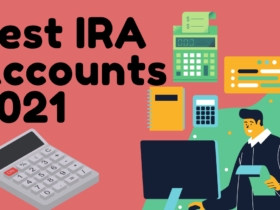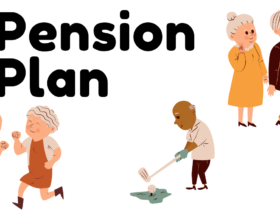Young children or you still can not be top of mind at this point in your life you are building your career, retirement. But someday, if you are lucky and save on a regular basis, it will be.
To help you ensure financially secure retirement plans. It is wise to make a plan early in life – or so you may have already done so. By diverting a portion of your paycheck into a tax-advantaged retirement savings plan, for example. Funds to help fast can lead to peace of mind for those so-called golden years.
“One company’s profit sources may not be as generous as others,” explains David Littell, retirement planning specialist and professor emeritus of taxation at the American College of Financial Services. “It is really important that you read the summary plan description that is provided to all participants. So that you can understand the design of the plan.”
By understanding the options for your retirement plans. You will be better equipped to maximize your benefits and actually achieve the retirement plans you want.
Read Also- Planning for Retirement
The top 5 Best Retirement Plans
1. IRA plans
An IRA is a valuable retirement plans created by the US government to help workers save for retirement plans. Individuals can contribute up to $ 6000 to an account in 2020 and 2021. And workers over the age of 50 can contribute up to $ 7000.
There are many types of IRAs, including a traditional IRA, Roth IRA, spouse IRA, IRA rollover, September IRA, and simple IRA. What is each here is how they differ from each other and.
# Traditional IRA
A traditional IRA is a tax convenience plan that allows you significant tax rebates when you save for retirement. Anyone who earns money by working can contribute to the plan with pre-tax dollars, meaning no contributions are taxable income. The IRA allows these contributions to grow tax-free until the account holder withdraws them upon retirement and they become taxable. Earlier withdrawals may leave employees subject to additional taxes and penalties.
| Pros | Cons: |
|---|---|
| To invest in a traditional IRA retirement because it is a very popular account provides certain tax benefits valued, and it also allows you to buy almost a limitless number of investments – stocks, bonds, CDs, real estate, and still other things. Perhaps the biggest advantage, though, is that you will not have any until you withdraw money at retirement. | You may need to take your money from a traditional IRA, then it is more expensive for the removal of additional penalties. And an IRA, you money Other topics in a bank whether your need is for investment in stocks or bonds or something. You decide where and how to invest the money, even though it would have only to ask a consultant to investment. |
What it means to you: A traditional IRA, one of around best retirement plans you can get a 401 (k) plan with a matching contribution, that is somewhat better, though. But if your employer is removed does not offer a defined contribution plan, is available to a traditional IRA instead – although the contribution deductibility higher income levels. See How to Retire.
#Roth IRA
A Roth IRA is a new take on a traditional IRA, and it offers the advantage enough. Contributions to a Roth IRA are made with money after tax, meaning that you have to pay taxes on the money that goes into the account. In foreign currency, you will not have to pay tax on any contribution and income that comes out of the account on retirement.
| Pros | Cons: |
|---|---|
| Roth IRA 59 years of age and a half or later, money offers many advantages, including special ability to taxes to avoid to be taken out of the account at retirement. Roth IRA also offers plenty of flexibility, because you can carry out often contribute – not income – or at any time without penalty. This flexibility makes the Roth IRA is a great retirement plan. | With a traditional IRA, you have complete control over investments in Roth IRA. And that means that you will need to decide that money to work for you or how to invest. Income limits for contributing to a Roth IRA, however, the back-door way to bring money into one. |
What it means to you: A Roth IRA is an excellent choice for the benefit of his vast. And it is an excellent choice if you are to keep the taxman to grow your income for retirement and touch it again.
# Spousal IRA
IRAs are normally workers who are close to the income earned, but the spouse IRA as well as allowing a worker’s spouse with earned income to an IRA fund. However, the husband working or taxable income of the wife must be greater than any contributions made to IRAs, and the spouse’s IRA may be either a traditional IRA or IRA to a Roth.
| Pros | Cons: |
|---|---|
| Spouse biggest positive of the IRA, either traditional or Roth version that it is a non-working spouse allows to take advantage of the various benefits of an IRA. | There is not a particular downside to a spouse IRA, however, like all IRAs, you must decide how to invest the money. |
What it means to you: Spouse IRA allows you to take care of the retirement plan of your spouse without your partner will be forced earned matter usually in the form of income tax. That could be at home or allow your spouse to take care of other family needs.
# Rollover IRA
A rollover IRA is created when you move a retirement account such as a 401(k) or IRA to a new IRA account. You “roll” the money from one account to the rollover IRA. And can still take advantage of the tax benefits of an IRA. You can establish a rollover IRA at any institution that allows you to do so. And the rollover IRA can be either a traditional IRA or a Roth IRA. There’s no limit to the amount of money that can be transferred into a rollover IRA.
A rollover IRA also allows you to change a Roth IRA, or the kind of the opposite retirement account to a traditional IRA. For you to move money in and then transfer to create a rollover IRA account. Transfers can create tax liabilities for certain, though, is how to proceed before taking important decisions to understand these results.
| Pros | Cons: |
|---|---|
| An IRA rollover allows you to continue if to take advantage of attractive tax benefits you decide to drop plans for 401 (k) with a former employer for whatever reason. If you just want to change IRA providers to an existing IRA, you can rollover your account to a new provider. As in all IRAs, you can buy a wide variety of investments. | Like all IRAs, you how to invest money, and that will need to decide may cause problems for some people. You should pay particular attention to any tax consequences of rolling over their money, because they might be enough, but it is usually only an issue if you change your account type. |
What it means to you: A rollover IRA is a convenient way to move from an IRA into a 401 (k) or IRA account to another. Rollover IRA is giving you the chance to convert to Roth or vice versa IRA from traditional to be able to improve their financial situation.
2. Defined contribution plans
Since their introduction in the 1980s, Defined Contribution (DC) plans. Which includes 401 (k), have all but occupied the retirement market. Roughly 86 percent of Fortune 500 companies offered instead of traditional pension DC plans in 2019. According to a recent study from insurance broker Willis Towers Watson.
While a similarly structured 403 (b) plan is offered to employees of public schools and some tax-exempt organizations, the 401 (k) plan is the most ubiquitous DC plan among employers of all sizes, and the 457 (b) plan the most Commonly available to state and local governments.
#401(k) plans
A 401 (k) plan provides a way for a tax facility plan to save for retirement. An employee contributes to a plan with a traditional 401 (k) pre-tax wage. Meaning the contribution is not considered taxable income. Upon retirement, distributions make taxable benefits, although 59 years old may be subject to withdrawal taxes and additional penalties.
| Pros | Cons: |
|---|---|
| A 401 (k) plan can be an easy way to save for retirement, because you can determine the money to come out of your paycheck and be invested automatically. The money can be invested in a number of high return investments such as stocks and you will not be paying tax on the profits until you withdraw money (or ever in a Roth 401 (or)). In addition, many employers offer you a match on contributions, giving you free money – and an automatic benefit – just to save. | A major disadvantage of the 401 (k) plan may be you have to pay a penalty for accessing the money if you need it for an emergency. While many plans do not allow you to take loans from your funds for worthy reasons, it is not a guarantee that your employer’s fund will do that. Your investments are limited to the funds provided in your employer’s 401 (k) program so you may not be able to invest in what you want. |
What it means to you: A 401 plan (a) The best way to save for retirement. And if you can get bonus “match” money from your employer, you can also save more quickly.
#403(b) plans
,A 403 (b) plan is much the same as a 401 (k) plan. But it is offered by public schools, charities and some churches, among others. At retirement, withdrawals can create additional tax and penalties to make taxable benefits and disbursements before the age of 59.
They have a tax-free retirement similar to a Roth 401 (k), a Roth 403 (b) allowing you to save and withdraw tax money later.
| Pros: | Cons: |
|---|---|
| A 403 (b) is an effective and popular way to save for retirement, and you can determine if the money is automatically deducted from your paycheck, helping you save more effectively. Money can be invested in a number of investments, including annuities or high-return assets such as share funds, and you won’t have to pay taxes until you withdraw money. Some employers may also provide you with a matching contribution if you save money in a 403 (b). | Like a 401 (k), money in a 403 (b) plan can be difficult to access unless you have an emergency. You may still be able to use the money without an emergency, it may cost you extra penalties and taxes, although you can also take a loan from your 403 (b). Another downside: Since you may not be able to invest in what you want, your options are limited to the investment options of the plan. |
What it means to you: A 403 (b) plan, saving for retirement. Especially if they have the best solution for workers in some areas can receive any matching funds. The 403 (b) calculator can help you determine how much you can save for retirement.
# 457(b) plans
A 457 (b) plan is similar to a 401 (k). But it is only available to state and local governments and certain tax-exempt organizations’ employees. This tax benefit scheme can contribute to an employee plan with pre-tax wages, which means it is not taxable. 457 (b) contribution allows to grow tax-free until retirement, and when the employee withdraws money, it is worth doing.
| Pros: | Cons: |
|---|---|
| A 457 (b) plan because of its tax advantages, can be an effective way to save for retirement. Planning proposals older workers that some do not offer other plans special catch-up savings provisions, as well. 457 (b) is considered a supplemental savings plan, and that’s why 59-year-old half before drawing 10 percent of fines that are not subject to the 403 (b) plans. | Typical 457 (b) plan is an employer match, which does not offer it makes much less a 401 (k) attractive than planned. Moreover, it is also difficult to take an emergency withdrawal from a 457 (b) plan than a 401 (k). |
What it means to you: A 457 (b) plan can be a good retirement plan. But it does offer some drawbacks compared to other defined contribution plans. And maybe beneficial for without an additional penalty of 59 and a half by offering clearance before specific retirement age, 457 (b) retired public servants who have a physical disability and access needs for their money.
3. Pensions
Pensions are fully funded by employers and provide a fixed monthly benefit for workers upon retirement. But DB schemes are on the endangered species list as fewer companies are offering them. In 2019, 14 percent of Fortune 500 companies entice new employees with pension plans, down from 59 percent in 1998. According to Willis Towers Watson data.
Why? DB plans require an expensive employer to make good on the promise to fund a hefty sum for their retirement plans. A pension, which is payable for life, usually replaces one percent of your salary based on your tenure and salary.
According to a common formula Littell, the final average compensation is 1.5 percent multiplied by years of service. A worker with an average salary of $ 50,000 ending a 25-year career, for example, would receive an annual pension payment of $ 18,750, or $ 1,562.50 a month.
| Pros: | Cons: |
|---|---|
| “You understand that your company is providing 30 percent to 40 percent of your salary for the rest of your life, plus you are getting 40 percent from Social Security, providing a strong basis of financial security. Does, ”says Littell. “Additional savings can not help but are not central to your retirement security.” | The formula is usually served since the compensation is linked to the year, profit more rapidly at the end of his career. “If you went to transition jobs or if you hit retirement age before the company ended the plan, you might get a lot less than you originally expected,” Littell says. |
What it means to you: If you are lucky enough to have one. These company pensions are increasingly rare and valuable, leaving the company can be a major decision. Should you stay or should you go? It depends on the financial strength of your employer. How long you have been with the company and how close you are to retiring. You can also factor in your job satisfaction and whether there are better employment opportunities elsewhere.
4. Guaranteed income annuities (GIAs)
GIAs are not typically offered by employers, but individuals can purchase these annuities to create their own pensions. You can do a big lump sum business at retirement and buy an immediate annuity to get a monthly payment for life, but most people are not comfortable with this arrangement.
For example, at age 50, you can start paying premiums until age 65, if that’s when you plan to retire. “Every time you pay, it’s your life you get paid for,” Littell says.
You can buy these on an after-tax basis, in which case you will only have to pay tax on the scheme’s income. Or you can buy it within an IRA and receive an advance tax deduction. But the entire annuity will be taxable when you take out the withdrawal.
| Pros: | Cons: |
|---|---|
| Littell himself invested in a deferred income annuity to create an income stream for life. “It’s very satisfying, it has felt really good building a big pension over time,” he says. | If you are going to retire or you’re going to retire, even if you are not sure, it might not make any sense. “If you’re looking for a strategy that you can not get rid of,” he says. |
What it means to you: You will get a return like bonds and lose the chance to get more market share in lieu of an income guarantee you. Since payments are for life, you also get paid more (and a better overall return) if you live longer.
“People forget that these decisions always involve a trade-off,” Littell says.
5. Profit-sharing plans
Some companies offer a profit sharing plan to their employees as an incentive for them to be productive so that they can both promote and share the company’s profits.
There is one more distant advantage, in the sense that you cannot contribute to it; Only employers can. But here’s the catch: Your employer has discretion as to whether to contribute year after year. However, the government says the contribution is “recurring and substantial.”
| Pros: | Cons: |
|---|---|
| “It does not cost anything,” says Littell. “Plans to share some of the benefits you can choose investments you want and others, Trustees handle investment decisions.” | A Profit-sharing plan is a good one otherwise well-rounded retirement can be used in the form of a supplement to the plan, a fail-safe way is not to ensure their financial security. |
What it means to you: To get a sense of what to expect, to look at the history of company contributions while you are planning for retirement, this is a good idea. You do not need to make a lot of decisions unless the plan allows you to determine how to invest money.
As an important caveat: “the time of delivery, any account, are you sure it is wrapped in an IRA so you want to make deferred or tax,” says Littell.








